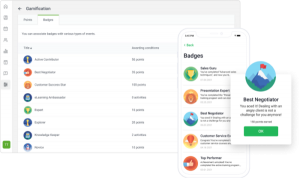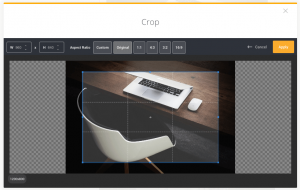Data is a vital tool. It drives many activities. When it comes to your website, you will want to collect as much data as possible to help you in the process of Search Engine Optimization (SEO). This is probably the biggest task many website owners have to grapple with. SEO, web design and site analytics are three things that you cannot separate from each other. There are some features of your site’s design that affect your SEO efforts. It is the analytics that will tell you whether your site is performing at its best.
Metrics provided by analytics
Tools like Google Analytics provide SEO professionals with a lot of insight on a variety of metrics. There are those metrics that are given more importance by these practitioners. These include things like page views. There are so many factors that affect the number of views of your site. It is one thing to have people visiting your site in droves but another totally different thing to view the site. There is the average time spent on a page, a very important metric that is tracked by SEO.
The bounce rate refers to the number of people who leave before a page has finished loading. It is related to the average time that is spent on a page. These metrics provide SEOs with a lot of information concerning the site’s performance and especially the design. For instance, your bounce rate might be extremely high because of a faulty design issue. The SEO is going to conduct a few tests on the design of the site to make sure that it works out. Perhaps the design is not mobile-responsive or it is taking too long to load.
Some of the other factors that are considered in the analytics include the social integration, images, calls-to-action (vital when working to increase conversions) and the page content. A majority of site analytics tools will give you information concerning the most popular content on your site. This allows you to tailor your content around the theme of the site.
Crucial analytics related to web design
There are several analytics that are related to the site’s design and you must put them into serious consideration. These include issues like the speed of the website. This information might not be provided by Google Analytics or some other tool. There are however so many tools that are available for you to test the speed of your website. Why is this important? Well, this is one of the factors that are considered by the search engines. When Google is ranking your website, it will take into account the amount of time that the page takes to load. It goes without saying that a webpage which takes a long time to load is not going to rank highly.
Usually, the traffic to this kind of page (one that takes too long to load) is low. This in turn affects the performance of the website on the search engines. The speed of a website is a function of its design. There are some designs that are cluttered with irrelevant widgets and plugins. This makes the site too heavy and if someone has slow internet connections, then they might not be able to access your site. To control such issues, there are some trends that are being seen in web design:
- Minimalist design- this is probably the hottest trend in web design currently. The design of the site is stripped down to its most basic elements that allow the design to function.
- Cloud-hosting photographs- there are some images that are just so heavy and they will slow down your site’s speed. The same is the case with the videos and podcasts. To reduce such occurrences, this multimedia content is hosted away from the site but still visible from the page.
Responsiveness of the design
Another very important factor in web design is the responsiveness of a site. Since analytics tell you about the type of browser that your visitors are using, you can figure out whether your site is responsive or not. There are those websites that you can only access from a computer; when you try to view them from your smartphone or tablet, they are very difficult to use.
Research has shown that a majority of web users access internet services through mobile devices. As such, it is very important to make sure that the design of your website is fully mobile-responsive. If people are not able to access your site through their mobile devices, then you will definitely have some SEO problems.
Location-focused content
Content is part of the design of a website. With local SEO becoming the order of the day across the world, it is greatly beneficial to have content that is focused on a particular location. The keywords that you use should be relevant to a specific location. For instance, if you are selling shoes in America, there are those places that your customers are concentrated. You will get this information from your site’s analytics. The content on your site can be tailored to increase the number of customers from these places and also bring other areas onboard.
To make your content more location-relevant, you can use keywords in the development of the content. Keywords for your shoe business would be something like shoes in Brooklyn, NY, or if it is a watch business, sports watches in California. There are tools that are available to help you do your keyword research well. Content that is focused on a particular location helps a lot in the ranking of a website.
Conclusion
In summary, the analytics results of your website can tell a lot about your site’s performance. The design of your website has a great impact on your SEO efforts. Things like mobile-responsiveness, website speed and use of location-focused content can help to boost your site’s performance on the search engine results pages. Analytics are your best friend when it comes to streamlining your business’ SEO tasks.
Digital & Social Articles on Business 2 Community(46)
Report Post






